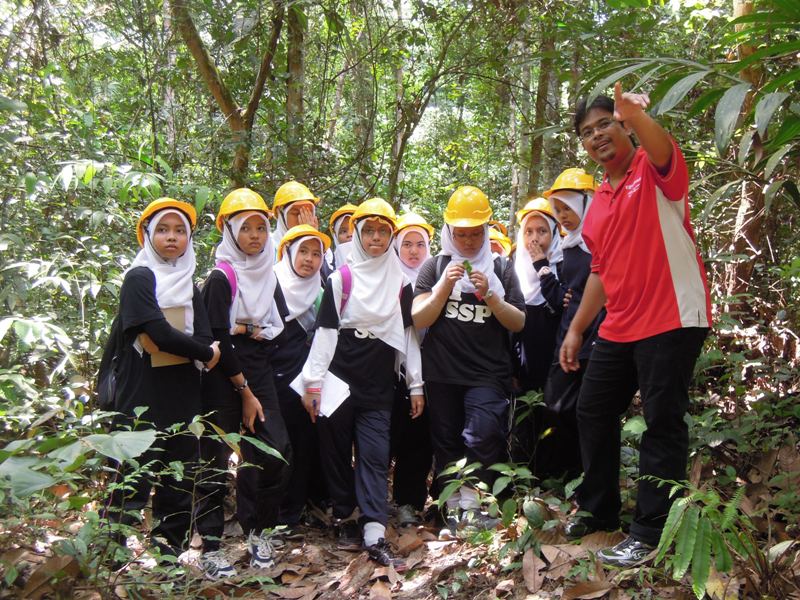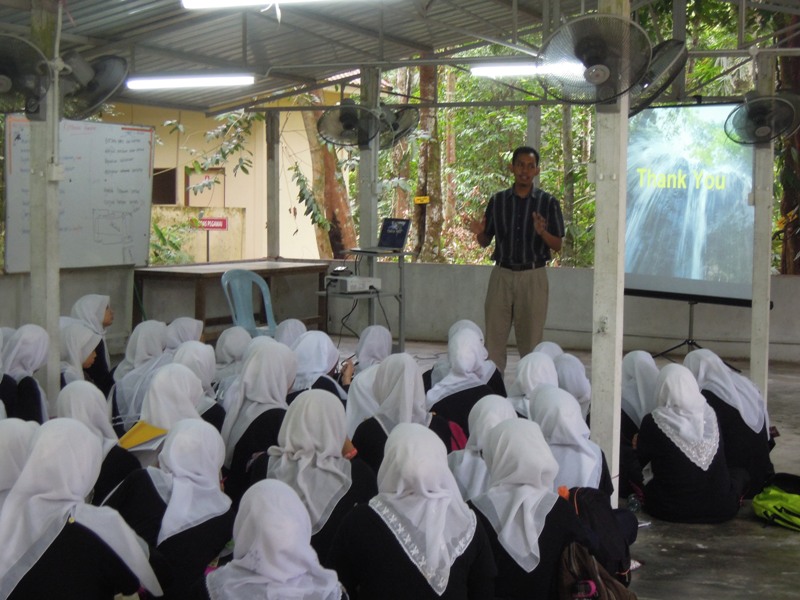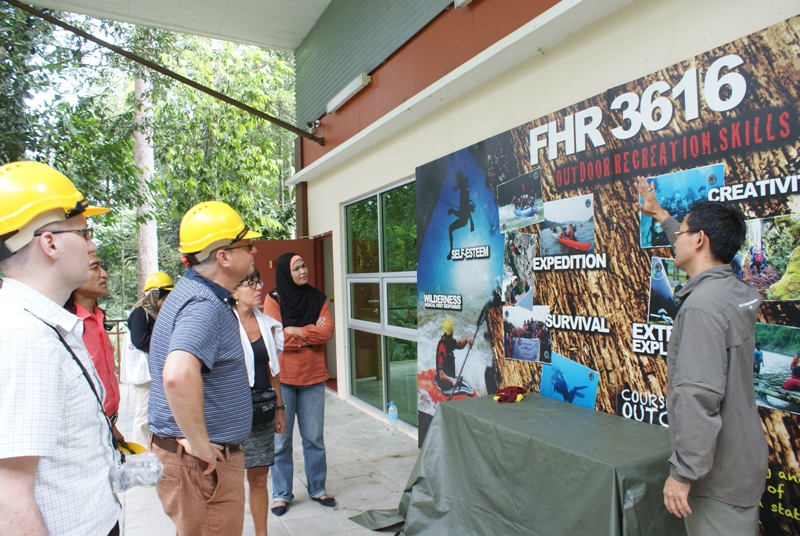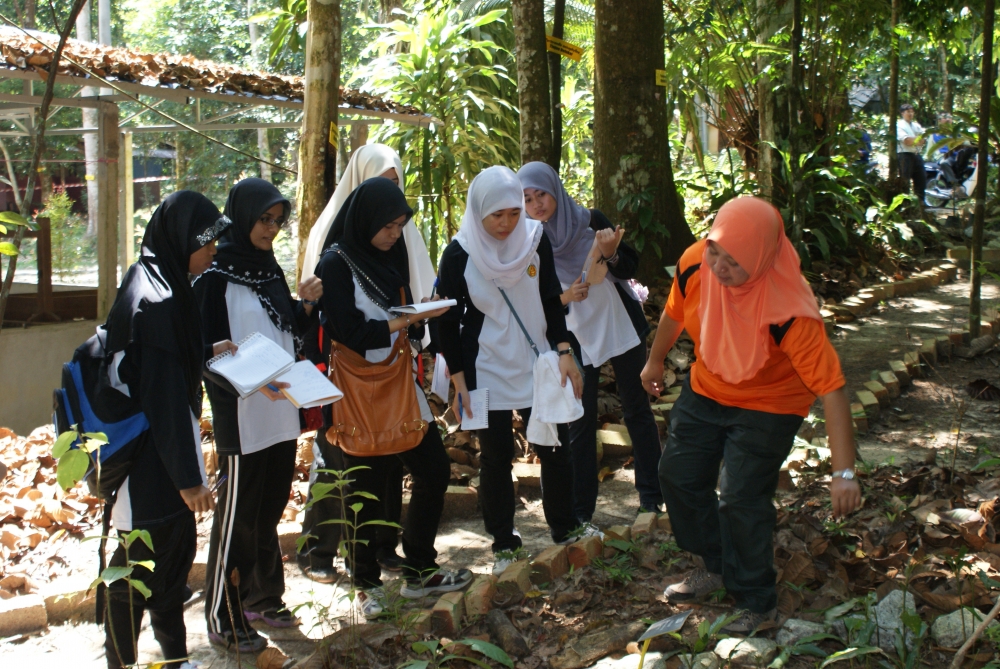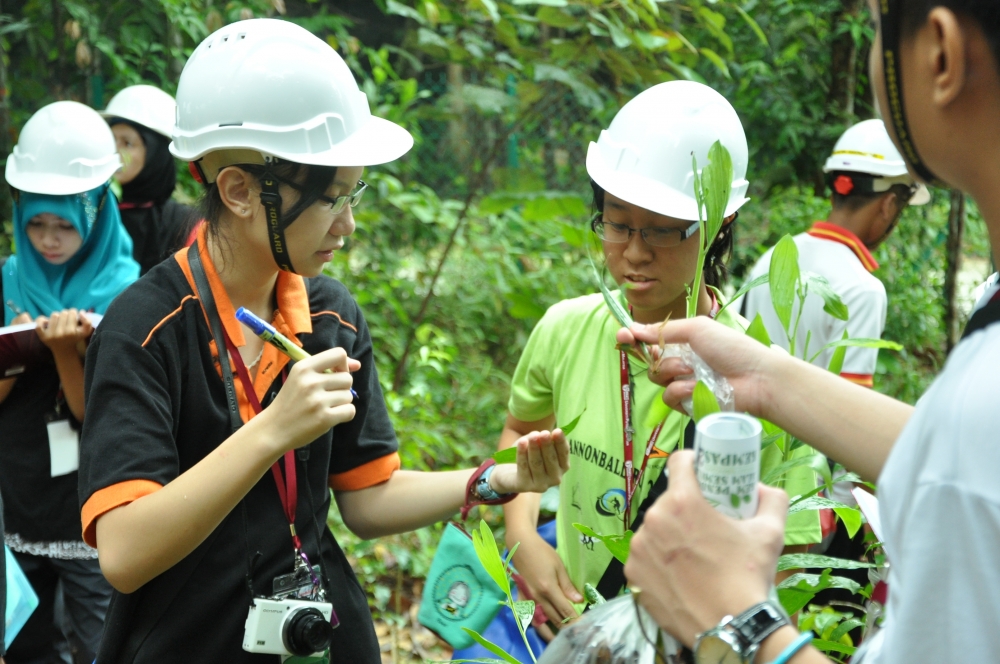
Managing Forest For Education
MALAYSIA is rich in its natural resources, endowed with its fertile soil, hot and humid temperatures, and high rainfall throughout the year. Our lakes, rivers, and seas are abundant with fish as well as a variety of aquatic and marine life. Mangrove forests adorn our beaches, while forests - whether in the lowlands or the mountains - are rich in a wide variety of plant and animal species. Some of the species are endemic - cannot be found anywhere else except in this country. Malaysia is identified as one of the 17 mega diversity countries in the world. This has portrayed Malaysia as a biological ‘treasure chest’, with lots of potential for the development in food, pharmaceutical, and various industries through research and development. The forests in Malaysia are also rich with wood resources of various species.
To ensure the forest areas in Peninsular Malaysia are protected, the federal and state governments have declared Permanent Forest Reserves (HSK) for strategic forest areas throughout the country, based on the concept of rational land use. Under the National Forestry Act 1984, the Permanent Forest Reserves (PRF) is classified into various functional classes. The classification consists of Timber Production Forests, Land Protection Forests, Land Reclamation Forests, Flood Control Forests, Water Catchment Forests, wildlife sanctuary forests, Virgin Reserves Forests, Amenity Forests, Education Forests, Research Forests and Forests for Federal Purposes.
To ensure the forest areas in Peninsular Malaysia are protected, the federal and state governments have declared Permanent Forest Reserves (HSK) for strategic forest areas throughout the country, based on the concept of rational land use. Under the National Forestry Act 1984, the Permanent Forest Reserves (PRF) is classified into various functional classes. The classification consists of Timber Production Forests, Land Protection Forests, Land Reclamation Forests, Flood Control Forests, Water Catchment Forests, wildlife sanctuary forests, Virgin Reserves Forests, Amenity Forests, Education Forests, Research Forests and Forests for Federal Purposes.
Forest Education
Based on Section 10 (1), National Forestry Act (APN) 1984, an Education Forest is one of the classes under the Permanent Forest Reserves according to the function of the forest that the State Authority must gazette. The Forestry Department of Peninsular Malaysia defined Education Forest as an area within a Permanent Forest Reserve used for educational purposes to create public awareness of the importance of forest in maintaining the balance of the physical, social and economic environment. The aim is to promote forestry education and publicity and provide extension services to increase the community’s understanding of the benefits of forests and the importance of conserving them. Furthermore, educating and helping people of all ages about forestry matters may also help them appreciate our country’s natural resources and teach them how to conserve the resources for the future generations.
Apart from that, there are forested areas under the Local Authority. It is gazetted as Education Forests such as Eco-Education Forests under the management of Taiping Municipal Council and Bukit Gasing Education Forests under the Petaling Jaya City Council.
Apart from that, there are forested areas under the Local Authority. It is gazetted as Education Forests such as Eco-Education Forests under the management of Taiping Municipal Council and Bukit Gasing Education Forests under the Petaling Jaya City Council.
Management of Educational Forest
Managing educational forests sustainably requires efficient and effective management and implementation strategies. Several aspects that need to be emphasized are governance, rules and regulations, silvicultural management, planning and conducting research, education, and development activities.
a) Governance: In managing an educational forest sustainably, it is necessary to have efficient and effective management and administration. It is usually managed by experienced and dedicated professional officers and supported by state-of-the-art facilities and equipment. The administration can provide satisfaction to customers consisting of students, researchers, recreational area users, and visitors from various backgrounds when they are proactive, customer-friendly, and transparent, without any bureaucracy.
b) Rules and regulations: Forest education must be managed, developed, and protected under the provisions of the forest law and other relevant legislation in an orderly and perfect manner. Control and supervision of educational, research, and other activities are carried out through effective enforcement of administrative rules with an emphasis on consumer safety.
c) Silviculture management: The forest management system emphasizes the conservation and development of forest resources. Flora and fauna resources are monitored continuously, and conservation and protection measures are taken to ensure optimal resources. Measures that can be taken for conservation and protection are such as periodic monitoring of boundaries between compartments, identification of species as well as periodic surveying of compartments. The practice of silvicultural system produces an optimal stock of forest stand for teaching, research, development, and recreation purposes.
d) Research activities: An integrated, dynamic, and multidisciplinary research program needs to be planned and carried out to produce a variety of meaningful discoveries and contribute to the excellence of forestry science. Areas that may need to be emphasized in forestry science are forest management, forest resource production, biotechnology, conservation, and forest services.
e) Education and extension - Various forestry and environmental education programs need to be developed and carried out as key activities to forest education. In addition, it is very important to develop arboretums, interpretation trails, and demonstration plots as the main features of an educational forest.
a) Governance: In managing an educational forest sustainably, it is necessary to have efficient and effective management and administration. It is usually managed by experienced and dedicated professional officers and supported by state-of-the-art facilities and equipment. The administration can provide satisfaction to customers consisting of students, researchers, recreational area users, and visitors from various backgrounds when they are proactive, customer-friendly, and transparent, without any bureaucracy.
b) Rules and regulations: Forest education must be managed, developed, and protected under the provisions of the forest law and other relevant legislation in an orderly and perfect manner. Control and supervision of educational, research, and other activities are carried out through effective enforcement of administrative rules with an emphasis on consumer safety.
c) Silviculture management: The forest management system emphasizes the conservation and development of forest resources. Flora and fauna resources are monitored continuously, and conservation and protection measures are taken to ensure optimal resources. Measures that can be taken for conservation and protection are such as periodic monitoring of boundaries between compartments, identification of species as well as periodic surveying of compartments. The practice of silvicultural system produces an optimal stock of forest stand for teaching, research, development, and recreation purposes.
d) Research activities: An integrated, dynamic, and multidisciplinary research program needs to be planned and carried out to produce a variety of meaningful discoveries and contribute to the excellence of forestry science. Areas that may need to be emphasized in forestry science are forest management, forest resource production, biotechnology, conservation, and forest services.
e) Education and extension - Various forestry and environmental education programs need to be developed and carried out as key activities to forest education. In addition, it is very important to develop arboretums, interpretation trails, and demonstration plots as the main features of an educational forest.
Forestry Education Centre
A forest education centre is a place that provides environmental education facilities that the community, teachers, and students can visit to learn more about the forest environment, its importance, and what people can do to protect it. It promotes the conservation of natural ecosystems, education focused on forest stewardship, and research associated with forest ecology and management. One of Malaysia's latest forest education centres is located in the Ayer Hitam Forest Reserve, Puchong, Selangor. This area is also known as the Sultan Idris Shah Forestry Education Centre (SISFEC) and was awarded to Universiti Putra Malaysia through a long-term agreement. The Ayer Hitam Forest Reserve is a model of a forest education centre managed systematically and professionally by experts in the various fields of forestry for teaching, research, and extension.
